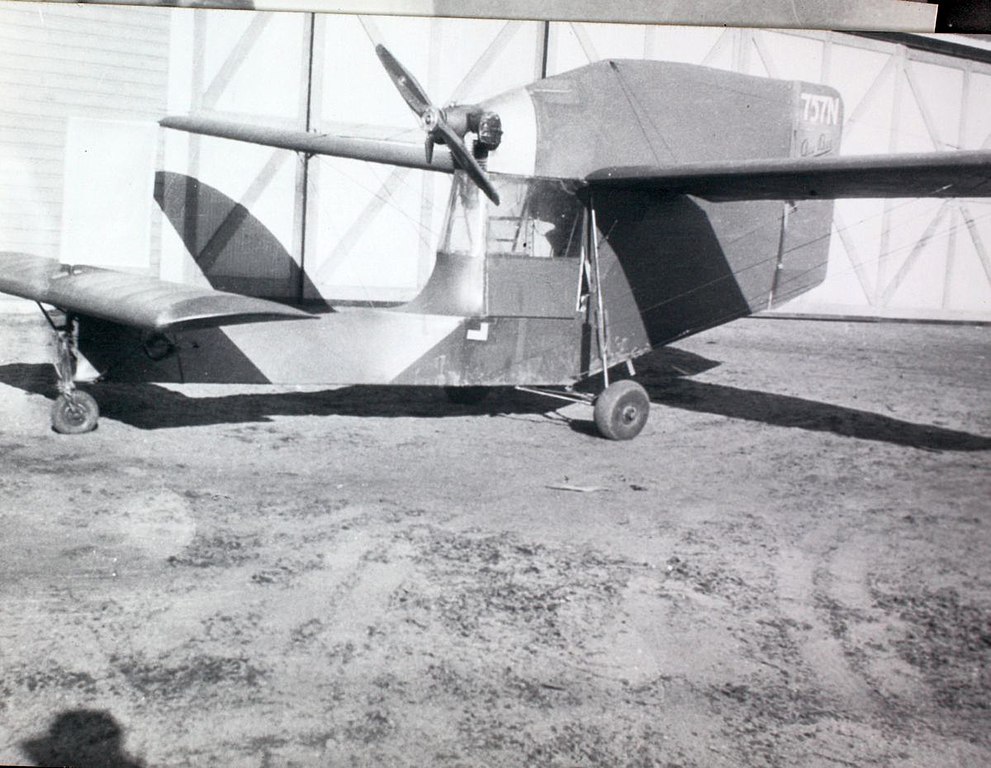The Golden Age of flight was known as a time of daring and adventure, however, you can't make an omlete without breaking some eggs, and not all of the aircraft that were built during the 1920s and 30s were golden. Take for example the Granville Brothers, who are known for making unconventional racers, such as the famous GeeBee R.1. However, they also produced a unique carnard aircraft that is all tail. It was made from the remains of a wrecked Areronca C-2.

It is not known if the Q in the Model Q stood for Questionable.
In 1932 the Stipa-Caproni first flew in Italy. It was not intended to be an operational aircraft, but served as a test bed for ducted fan tests. Even though these tests would be helpful in the development of jet engines, the Stipa-Caproni still looked like a flying barrell.

The Stipap-Caproni flew well, implausibly.
In 1929, in Mission Beach right here in San Diego, Paul Maiwurm almost revolutionized aircraft engineering. His Flyworm, AKA Maiwurm Cyclonic Aircraft, was suppoused to fly due to lift generated by a large spinning cylinder. Surprisingly this didn't work.


The Flyworm. Notice the Great Dipper roller coaster in the background of the bottom photo. Rumor has it that today the Flyworm sits at the bottom of Mission Bay, after Paul Maiwurm pushed it there after numerous failed flight attempts.
Waldo Waterman was also an inventor from San Diego, however his airplanes met with more technical (if not commercial) success than Maiwurm in the 1930s. In an attempt to built a "Model-T for the air," Waterman produced his Whatsit, and later the Arrowbile, one of the first flying cars.

What is that? Why its the Waterman Whatsit!
The Nemeth Parasol was a pretty conventional model, except for its circular wing, which allowed it to take off and land in short distances.

It takes no stretch of the imagaination to know why the Nemeth Parasol got the nickname of the Flying Umbrella.
Just because an airplane looks funny, that doesn't mean that the idea behind it wasn't a good one. Take for example the concepts of Vincent Burnelli, who prodcued airplanes that had uitlized a "Lifting Body" a concept where the plane's fuselage actually produced a large amount of lift.

The Burnelli UB-20 was so efficient it could carry a car undereath its fuselage.
You thought we were done with multiplanes? Think again! In the Golden Age, they were back and bigger than ever. The Caproni Ca. 60 had 8 engines and 9 wings.

The Ca. 60 had one successful, short flight before shattering (along with its creator's dreams) when it crashed on its second test flight.
Not only was the Kalinin K-7 big, it was just...unconventional. Designed for both civilian and miliatry purposes, the K-7 flew successfully before crashing, resulting in the death of all 14 on board.

Passengers on the K-7 had the pleasurable option of sitting IN the wings, a quiet option to be sure!
2001 Pan American Plaza, San Diego, CA
Phone: 619.234.8291
Información En Español
Contact Us
We would like to thank all our sponsors who help us make a difference. Click here to view all who help us.

The San Diego Air & Space Museum is a 501(c)(3) non-profit organization. Federal Tax ID Number 95-2253027.
